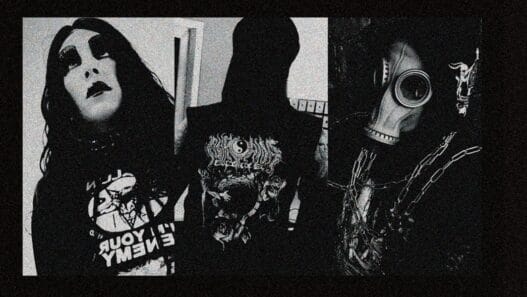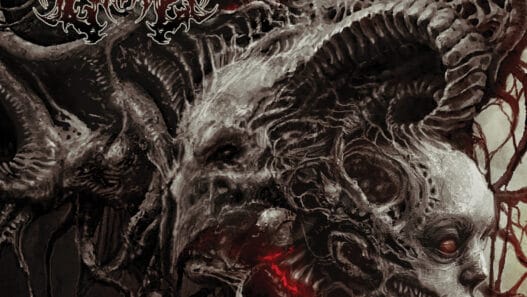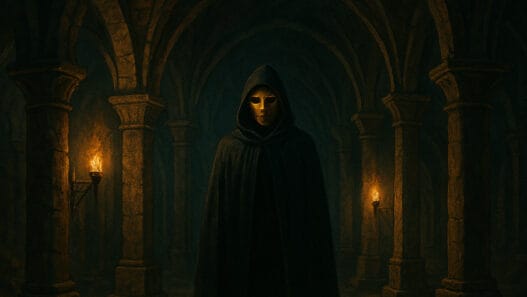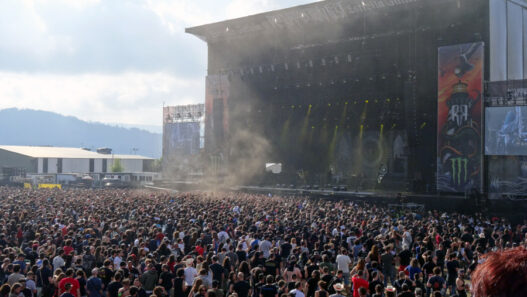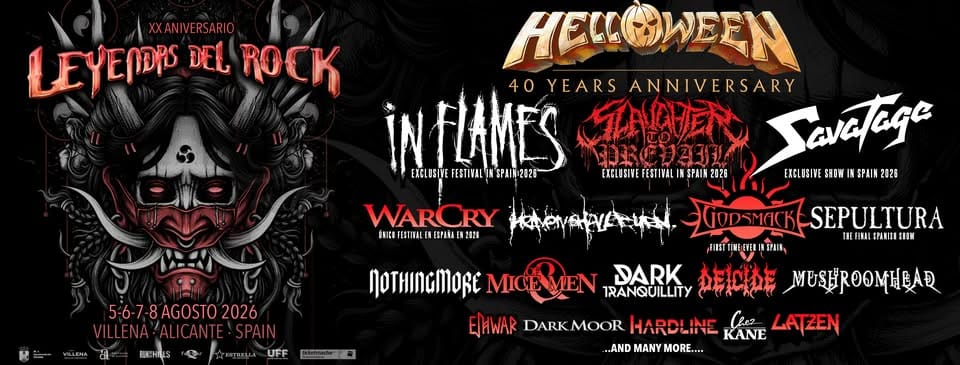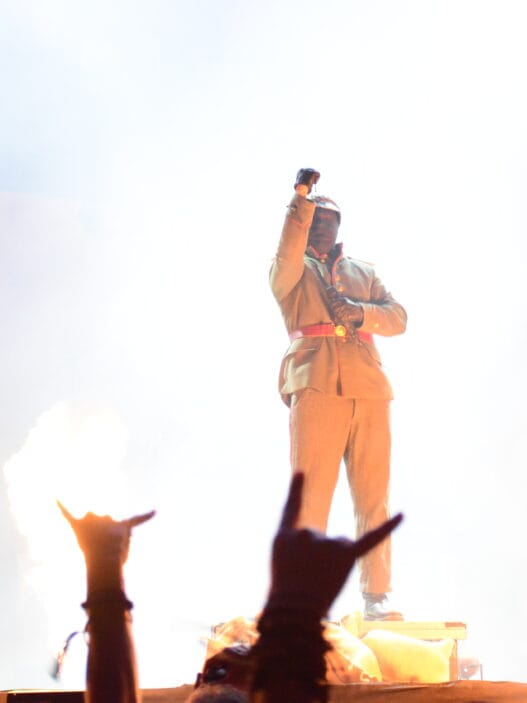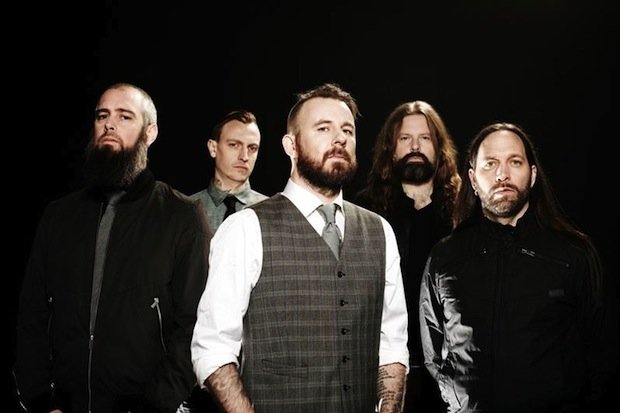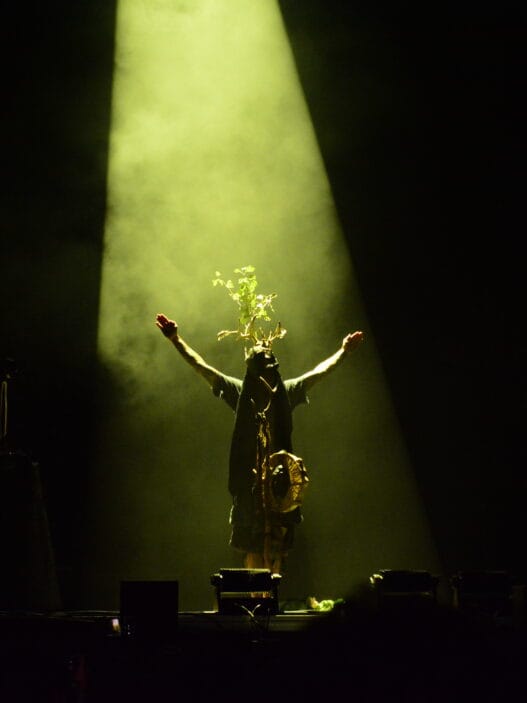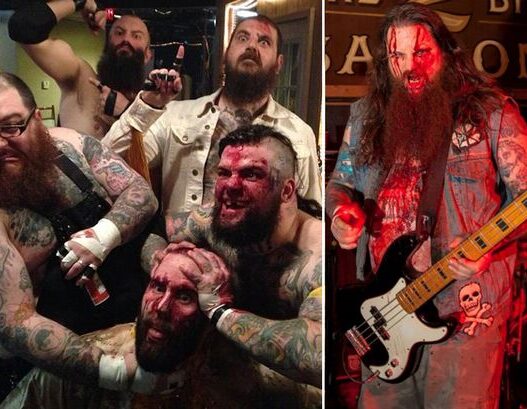(English Below)
Como asistente y observador veterano de la escena de festivales de metal en Europa, he pasado incontables horas, bajo el barro de Wacken o el sol abrasador de Villena, intentando descifrar el futuro de nuestro amado circuito. La pregunta es inevitable y cada año más apremiante: ¿Qué pasará cuando los gigantes caigan?
Hablo de Iron Maiden, Judas Priest, Metallica, Slayer (en sus giras ocasionales) y Kiss (ya retirados, pero cuyo vacío se siente). Estas bandas han sido, durante décadas, la columna vertebral económica y emocional de festivales como Wacken Open Air (Alemania), Hellfest (Francia) y los grandes eventos españoles como Resurrection Fest y Leyendas del Rock. El panorama está cambiando a una velocidad vertiginosa, y he aquí mi análisis detallado de hacia dónde se dirige el futuro de estos gigantes de la cultura metálica.

I. La sucesión de la guardia: ¿Quién tomará el testigo?
La realidad es cruda: la generación de bandas fundacionales del heavy metal se está retirando. En la próxima década, los grandes promotores se enfrentarán al desafío de encontrar reemplazos que puedan mover las 70.000 a 100.000 entradas que garantizaban los cabezas de cartel clásicos.
Mi predicción es clara: el testigo se dividirá en tres ejes principales, ya visibles en los carteles de 2026:
A. Los nuevos titanes del Arena: El eje metalcore y alternativo
Los festivales ya están apostando fuerte por bandas que han construido su base de fans en el siglo XXI y que manejan el espectáculo escénico con maestría.
- Bandas consolidadas: Slipknot (como cabeza de cartel de primer nivel), Rammstein (cuando giran, dominan los carteles y generan ventas masivas), Korn y, a menudo, Avenged Sevenfold. Estos grupos atraen a una audiencia masiva y transgeneracional.
- Los aspirantes al trono: Aquí es donde veo la mayor inversión. Bandas de metalcore como Parkway Drive, Architects y Bring Me The Horizon están ascendiendo rápidamente. El Resurrection Fest en España, por ejemplo, ha sido pionero en este enfoque, y ya vemos cómo se posicionan como segundos o terceros cabezas de cartel en eventos como Wacken. Su energía en vivo es brutal, lo que garantiza el espectáculo.
B. El bloque del extreme melódico y el power metal
Este eje es vital para el Heavy Metal tradicional, especialmente en España y Alemania. Bandas que combinan técnica, épica y una base de fans leal son las que consolidarán la línea central de los festivales.
- Los pilares europeos: Amon Amarth (con su épica vikinga garantizan una producción espectacular), Sabaton (con su enfoque histórico y su marketing impecable) y Behemoth (trayendo el Black/Death a la main stage).
- La regeneración del power metal: El Leyendas del Rock ya lo demostró en sus primeras confirmaciones para 2026 al incluir a Helloween (celebrando sus 40 años) y In Flames. Estos grupos son el nexo entre el pasado y el futuro melódico. Veo a Blind Guardian, Powerwolf y HammerFall asegurando las noches de épica que antes cubrían Maiden o Priest.
C. El nicho de vanguardia: El Deathcore y el Death Metal Técnico
Festivales como el SWR Barroselas Metalfest (Portugal), más enfocados en el underground extremo, y las carpas secundarias de Wacken y Hellfest, ya están elevando a bandas como Slaughter to Prevail, Orbit Culture y Chelsea Grin. Estos grupos garantizan la frescura del cartel y captan a la audiencia más joven que busca la máxima brutalidad sonora. El hecho de que Leyendas del Rock ya haya anunciado a Slaughter to Prevail para 2026 demuestra que la tendencia es global.
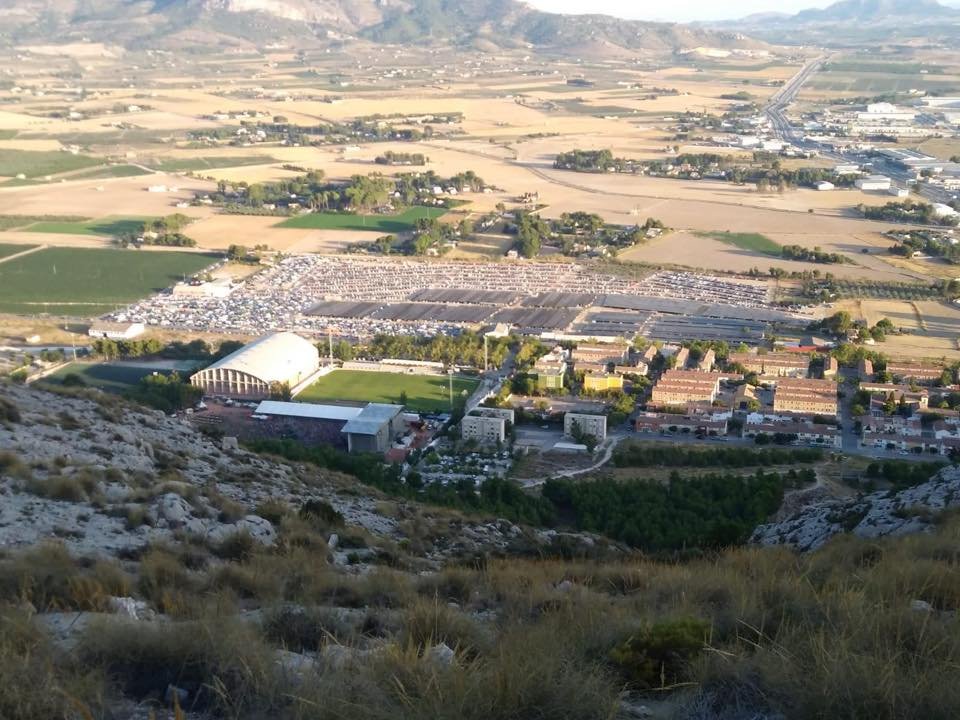
II. La escalada de precios y el modelo de negocio
El coste de los festivales es un punto de dolor para el fan, y la tendencia es ineludiblemente al alza.
Datos y proyecciones de precios (Ejemplo Wacken 2025):
El precio del abono completo para Wacken Open Air 2025 se situó alrededor de los 333 €. Esta cifra sirve como referencia para el precio «premium» del metal europeo.
A medida que los costos de producción aumentan (seguridad, infraestructura, logística post-pandemia) y los cachés de las nuevas cabezas de cartel se inflan (para compensar el vacío dejado por los clásicos), el precio de los abonos continuará subiendo a un ritmo superior al de la inflación.
- Proyección 2028-2030: No me sorprendería ver a Wacken o Hellfest cruzando la barrera de los 400 € – 450 € por abono de cuatro días.
- El eje ibérico: Festivales como Resurrection Fest, Leyendas del Rock y Vagos Metal Fest, si bien serán más asequibles que los gigantes (manteniéndose probablemente entre 180 € y 250 €), deberán seguir ajustando sus precios para poder competir por las bandas de segundo nivel internacional (Amon Amarth, Parkway Drive). La subida será inevitable.
III. Innovación en la organización y la experiencia del festival
Los festivales saben que ya no basta solo con el cartel. La organización se está moviendo hacia una experiencia total:
- Sostenibilidad y Logística: Wacken ya ha invertido masivamente en infraestructuras de drenaje para combatir el barro (un problema crónico), y veremos más festivales invirtiendo en energías renovables y vasos reutilizables. La presión por la sostenibilidad será un factor de coste, pero también de marketing.
- Tecnología y Seguridad: El uso de pulseras cashless (sin efectivo) ya es la norma, optimizando el gasto y reduciendo robos. En el futuro, veremos más aplicaciones de streaming y realidad aumentada para aquellos que no puedan asistir, monetizando la experiencia digital.
- Diversificación del Cartel: Festivales como Hellfest y Resurrection Fest se han dado cuenta de que diversificar es clave para la longevidad. Hellfest, por ejemplo, equilibra el Black Metal con el Hardcore, el Stoner y el Punk. Esta mezcla asegura una audiencia más amplia y menos dependiente de un solo subgénero, una tendencia que los festivales españoles están adoptando con éxito.
En resumen, el futuro de los festivales europeos es de transformación, pero no de decadencia. Los grandes nombres se irán, pero su vacío será llenado por una coalición de géneros liderada por el Metalcore, el Metal Melódico Épico y los pilares del Death/Black Metal con gran producción escénica. El precio subirá, sí, pero la experiencia, al volverse más diversa y tecnificada, también lo hará. La llama del metal seguirá ardiendo en Europa, aunque el combustible sea diferente.
As a veteran assistant and observer of the metal festival scene in Europe, I have spent countless hours, under the mud of Wacken or the scorching sun of Villena, trying to decipher the future of our beloved circuit. The question is inevitable and more pressing each year: What will happen when the giants fall?
I am talking about Iron Maiden, Judas Priest, Metallica, Slayer (in their occasional tours) and Kiss (already retired, but whose vacuum is felt). These bands have been, for decades, the economic and emotional backbone of festivals like Wacken Open Air (Germany), Hellfest (France) and the big Spanish events like Resurrection Fest and Leyendas del Rock. The landscape is changing at a dizzying speed, and here is my detailed analysis of where the future of these giants of metal culture is heading.
I. The succession of the guard: Who will take the baton?
The reality is raw: the generation of foundational heavy metal bands is retiring. In the next decade, major promoters will face the challenge of finding replacements that can move the 70,000 to 100,000 tickets that the classic headliners guaranteed.
My prediction is clear: the baton will be divided into three main axes, already visible in the 2026 lineups:
A. The new arena titans: The Metalcore and Alternative Axis
Festivals are already betting heavily on bands that have built their fan base in the 21st century and handle the stage show masterfully.
Consolidated bands: Slipknot (as a top-tier headliner), Rammstein (when they tour, they dominate lineups and generate massive sales), Korn, and often, Avenged Sevenfold. These groups attract a massive and transgenerational audience.
The aspirants to the throne: This is where I see the biggest investment. Metalcore bands like Parkway Drive, Architects and Bring Me The Horizon are rapidly ascending. The Resurrection Fest in Spain, for example, has been a pioneer in this approach, and we already see how they position themselves as second or third headliners at events like Wacken. Their live energy is brutal, which guarantees the spectacle.
B. The melodic extreme and power metal block
This axis is vital for traditional Heavy Metal, especially in Spain and Germany. Bands that combine technique, epicness, and a loyal fan base are the ones that will consolidate the central line of the festivals.
The european pillars: Amon Amarth (with their Viking epicness they guarantee a spectacular production), Sabaton (with their historical focus and impeccable marketing) and Behemoth (bringing Black/Death to the main stage).
The regeneration of Power Metal: The Leyendas del Rock already demonstrated this in its first confirmations for 2026 by including Helloween (celebrating their 40 years) and In Flames. These groups are the nexus between the past and the melodic future. I see Blind Guardian, Powerwolf and HammerFall securing the epic nights previously covered by Maiden or Priest.
C. The Vanguard Niche: Deathcore and Technical Death Metal
Festivals like the SWR Barroselas Metalfest (Portugal), more focused on the underground extreme, and the secondary tents of Wacken and Hellfest, are already elevating bands like Slaughter to Prevail, Orbit Culture and Chelsea Grin. These groups guarantee the freshness of the lineup and capture the younger audience that seeks maximum sonic brutality. The fact that Leyendas del Rock has already announced Slaughter to Prevail for 2026 demonstrates that the trend is global.
II. The Price Escalation and the Business Model
The cost of festivals is a pain point for the fan, and the trend is inevitably upwards.
Price data and projections (Wacken 2025 Example):
The price of the full pass for Wacken Open Air 2025 was around 333 €. This figure serves as a reference for the European metal «premium» price.
As production costs increase (security, infrastructure, post-pandemic logistics) and the fees of the new headliners inflate (to compensate for the vacuum left by the classics), the price of the passes will continue to rise at a faster pace than inflation.
2028-2030 projection: I would not be surprised to see Wacken or Hellfest crossing the 400 € – 450 € barrier for a four-day pass.
The iberian axis: Festivals like Resurrection Fest, Leyendas del Rock and Vagos Metal Fest, although they will be more affordable than the giants (likely staying between 180 € and 250 €), must continue to adjust their prices to compete for international second-tier bands (Amon Amarth, Parkway Drive). The increase will be inevitable.
III. Innovation in Organization and the Festival Experience
Festivals know that the lineup alone is no longer enough. The organization is moving towards a total experience:
Sustainability and Logistics: Wacken has already invested massively in drainage infrastructure to combat mud (a chronic problem), and we will see more festivals investing in renewable energy and reusable cups. The pressure for sustainability will be a cost factor, but also a marketing one.
Technology and Security: The use of cashless wristbands (without cash) is already the norm, optimizing spending and reducing theft. In the future, we will see more streaming and augmented reality applications for those who cannot attend, monetizing the digital experience.
Lineup Diversification: Festivals like Hellfest and Resurrection Fest have realized that diversification is key to longevity. Hellfest, for example, balances Black Metal with Hardcore, Stoner, and Punk. This mix ensures a broader audience and less dependence on a single subgenre, a trend that Spanish festivals are successfully adopting.
In summary, the future of European festivals is one of transformation, but not of decay. The big names will leave, but their vacuum will be filled by a coalition of genres led by Metalcore, Epic Melodic Metal and the pillars of Death/Black Metal with great stage production. The price will go up, yes, but the experience, by becoming more diverse and technologized, will too. The flame of metal will continue to burn in Europe, although the fuel may be different.



